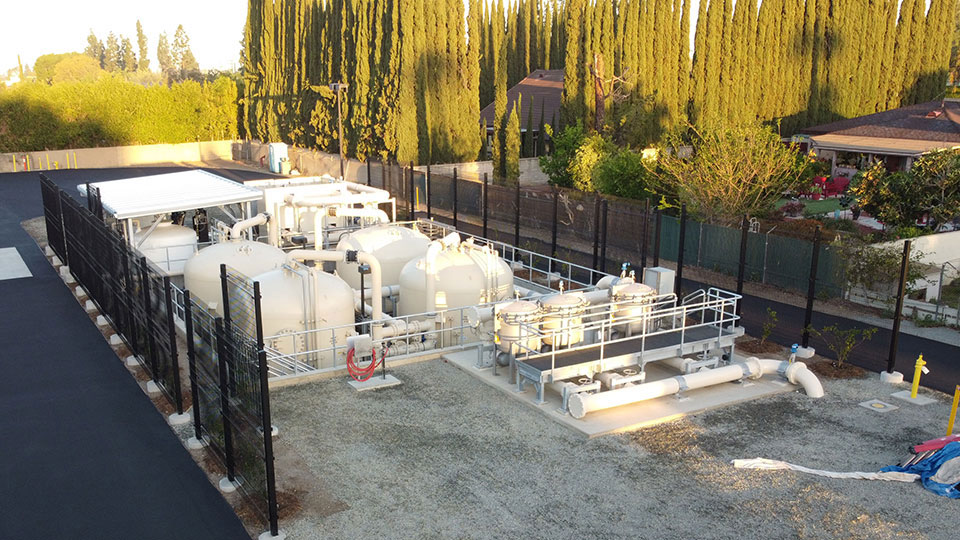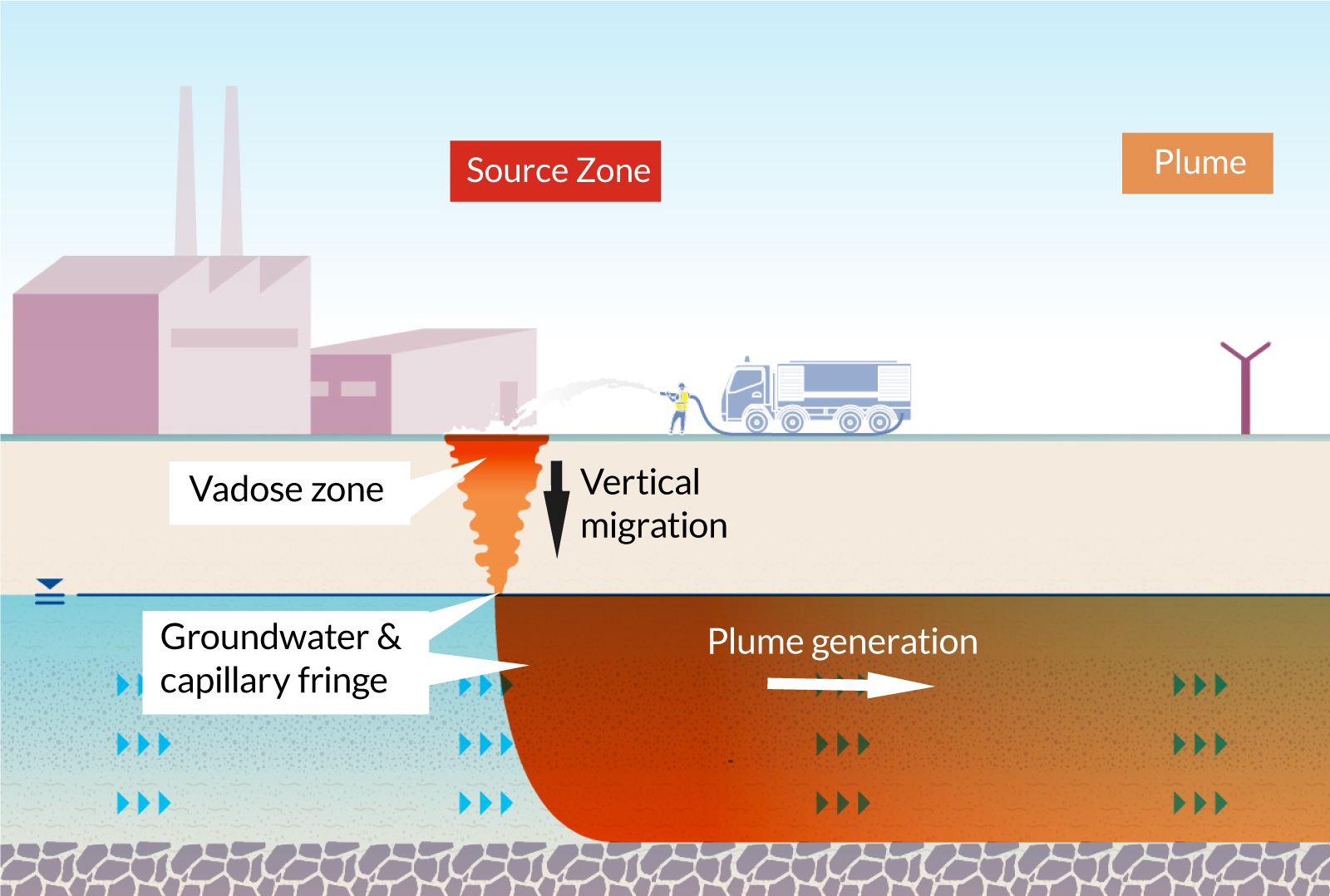How PFAS Treatment Reduces Environmental Impact and Improves Public Safety
How PFAS Treatment Reduces Environmental Impact and Improves Public Safety
Blog Article
Your Overview to PFAS Therapy Technologies and Perks
The frequency of PFAS contamination in water resources necessitates a thorough understanding of offered treatment innovations. Each technology not only targets certain PFAS compounds but also plays an essential role in boosting general water quality and protecting environmental stability.
Understanding PFAS Contamination
Understanding PFAS contamination is critical for resolving its pervasive influence on environmental and human health and wellness (m270 pfas treatment). Per- and polyfluoroalkyl materials (PFAS) are a group of artificial chemicals commonly used in different commercial and consumer items as a result of their water- and grease-resistant homes. Commonly discovered in firefighting foams, non-stick pots and pans, and water-repellent fabrics, PFAS have gone into the environment through production procedures, wastewater discharges, and leaching from land fills
Once launched, these materials continue the setting, leading to widespread contamination of soil and water resources. Their one-of-a-kind chemical framework, characterized by strong carbon-fluorine bonds, makes them resistant to destruction, resulting in a sensation referred to as "for life chemicals." PFAS can collect in the human body and the food chain, potentially causing unfavorable wellness effects, consisting of immune system interruption, developmental problems, and an enhanced risk of particular cancers.
Governing companies and health organizations are progressively acknowledging the significance of PFAS contamination, prompting efforts to monitor, examine, and mitigate its impacts. Comprehending the pathways of PFAS contamination is crucial for informing public plan and developing reliable approaches to safeguard both environmental and human health.
Introduction of Therapy Technologies
Various therapy innovations have actually been created to attend to the obstacles posed by PFAS contamination in water and soil. These technologies can be broadly identified right into a number of groups, each with its unique systems and effectiveness in getting rid of PFAS compounds.
One noticeable technique is ion exchange, which makes use of resin materials to catch and get rid of PFAS from infected water. This method is especially reliable for short-chain PFAS and can accomplish considerable decreases in concentration degrees. One more modern technology, progressed oxidation procedures (AOPs), uses solid oxidants and ultraviolet light to break down PFAS right into much less unsafe compounds. AOPs appropriate for treating a large range of PFAS substances yet may need careful optimization to optimize efficiency.

Turned On Carbon Filtering
Turned on carbon purification is a commonly utilized method for the removal of PFAS from polluted water, known for its capability to adsorb a wide array of organic compounds. This modern technology employs turned on carbon, a highly porous product with a comprehensive surface, which promotes the binding of PFAS particles with physical adsorption. The efficiency of turned on carbon in eliminating PFAS is influenced by numerous variables, consisting of the sort of carbon used, the contact time, and the concentration of PFAS in the water.
One of the benefits of activated carbon filtration is its flexibility; it can be applied in numerous setups, such as granular triggered carbon (GAC) systems or powdered activated carbon (PAC) systems. GAC systems are normally used in larger-scale applications, while political action committee can be made use of in smaller or temporary configurations. Additionally, the innovation is relatively easy to operate and preserve, making it obtainable for lots of water treatment centers.

Ion Exchange Equipment
Ion exchange systems represent an additional effective technique for the elimination of PFAS from infected water, matching methods like turned on carbon filtration. These systems operate the browse around this site principle of exchanging ions in the water with ions hung on a resin product. Ion exchange resins can be specifically formulated to target the negatively billed PFAS substances, successfully capturing them and allowing cleaner water to pass through.
Among the key advantages of ion exchange systems is their ability to eliminate a variety of PFAS, including both long-chain and short-chain versions. This adaptability makes them appropriate for different applications, ranging from metropolitan water therapy to commercial processes. Furthermore, ion exchange systems can typically attain reduced detection restrictions for PFAS contrasted to a few other treatment methods, hence boosting water quality.
Nevertheless, it is necessary to keep an eye on and take care of the regeneration of ion redirected here exchange media, as the performance can decrease with time because of saturation. Appropriate upkeep and substitute of the resin are important for sustaining the system's efficiency. Overall, ion exchange systems give a trusted and efficient solution for PFAS elimination, contributing dramatically to secure drinking water requirements and environmental management.
Advanced Oxidation Processes
Advanced Oxidation Processes (AOPs) make use of powerful oxidants to effectively deteriorate PFAS compounds in infected water. These ingenious therapy methods generate very responsive species, such as hydroxyl radicals, that can damage down complicated PFAS molecules into much less harmful byproducts. m270 pfas treatment. AOPs typically utilize mixes of ultraviolet (UV) light, ozone, hydrogen peroxide, or Fenton's reagent, boosting the oxidation capacity and improving deterioration effectiveness
The main advantage of AOPs exists in their capability to target a wide series of PFAS compounds, including both long-chain and short-chain versions. This flexibility is important, as PFAS contamination typically involves blends of different substances with differing chemical structures. Moreover, AOPs can be incorporated into existing water treatment systems, making them a useful remedy for numerous municipalities and industries.
Nevertheless, the implementation of AOPs can be resource-intensive, calling for cautious consideration of operational prices and energy consumption. In addition, while AOPs work in damaging down PFAS, they might not totally eliminate More hints all byproducts, necessitating more therapy steps - m270 pfas treatment. Generally, AOPs represent a promising opportunity for resolving PFAS contamination, adding to cleaner water resources and enhanced public health and wellness defense

Conclusion
Finally, attending to PFAS contamination calls for a comprehensive understanding of readily available therapy modern technologies. Triggered carbon purification, ion exchange systems, and advanced oxidation processes each present distinct benefits for efficiently eliminating these hazardous substances from water resources. By choosing the appropriate modern technology, communities can improve water top quality, protect public health and wellness, and reduce the environmental dangers connected with PFAS exposure. Continued research and application of these methods are important for efficient administration of PFAS contamination in influenced locations.
Report this page